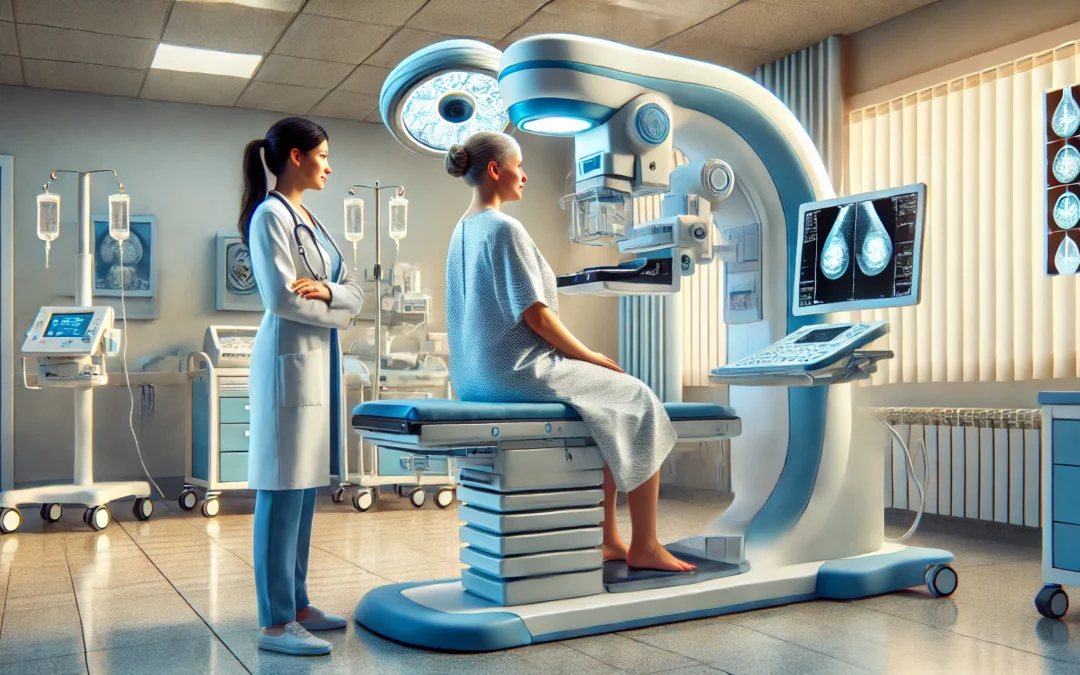Breast cancer is one of the most prevalent health concerns for women worldwide. According to the World Health Organization (WHO), it is the most common cancer among women, with over 2.3 million new cases reported annually. While advancements in medical science have significantly improved detection and treatment options, early detection remains the cornerstone of successful treatment outcomes. For women over the age of 40, mammograms are an essential tool in the fight against breast cancer.
Understanding Breast Cancer Risk
Breast cancer risk is influenced by a combination of factors:
- Age: The likelihood of developing breast cancer increases as women age. Most breast cancer cases are diagnosed in women over the age of 40.
- Genetic Factors: A family history of breast or ovarian cancer, particularly involving first-degree relatives, can elevate risk.
- Hormonal Factors: Prolonged exposure to estrogen, such as early menstruation (before age 12) or late menopause (after age 55), can increase risk.
- Lifestyle Factors: Factors like obesity, lack of physical activity, alcohol consumption, and smoking can contribute to breast cancer risk.
- Reproductive History: Women who have never given birth or had their first child after age 30 may face higher risk.
Importance of Early Detection
Early detection of breast cancer significantly improves treatment options and survival rates. The five-year survival rate for localized breast cancer detected early is 99%, according to the American Cancer Society. This is where mammograms play a pivotal role.
What is a Mammogram?
A mammogram is a low-dose X-ray of the breast designed to detect abnormalities before they can be felt or cause symptoms. It can identify lumps, calcifications, and other changes that might indicate cancer. Mammograms are safe, quick, and highly effective, making them the gold standard for breast cancer screening.
Why Mammograms Are Crucial for Women Over 40
- Increased Risk with Age: Women over 40 are at a higher risk of developing breast cancer. Regular mammograms can catch the disease at an early stage when it is most treatable.
- Detecting Hidden Changes: Many breast cancers are asymptomatic in the early stages. Mammograms can reveal abnormalities that are not yet palpable.
- Improved Survival Rates: Early detection through mammograms often leads to less invasive treatments and better outcomes. In many cases, it can prevent the need for extensive surgeries or chemotherapy.
- Monitoring High-Risk Women: For women with a family history of breast cancer or other risk factors, mammograms can help in early intervention.
When Should Women Start Getting Mammograms?
Health organizations such as the American Cancer Society and the U.S. Preventive Services Task Force recommend that women at average risk begin annual or biennial mammograms at age 40. However, women with a family history of breast cancer or genetic predispositions (such as BRCA1 or BRCA2 mutations) may need to start screening earlier. It is crucial to consult a healthcare provider to determine the best screening schedule based on individual risk factors.
Overcoming Barriers to Screening
Despite the proven benefits, many women skip regular mammograms due to fear, misconceptions, or lack of access to healthcare. Education and awareness campaigns are vital to address these barriers. Employers, community organizations, and healthcare providers can play a significant role in encouraging women to prioritize their breast health.

